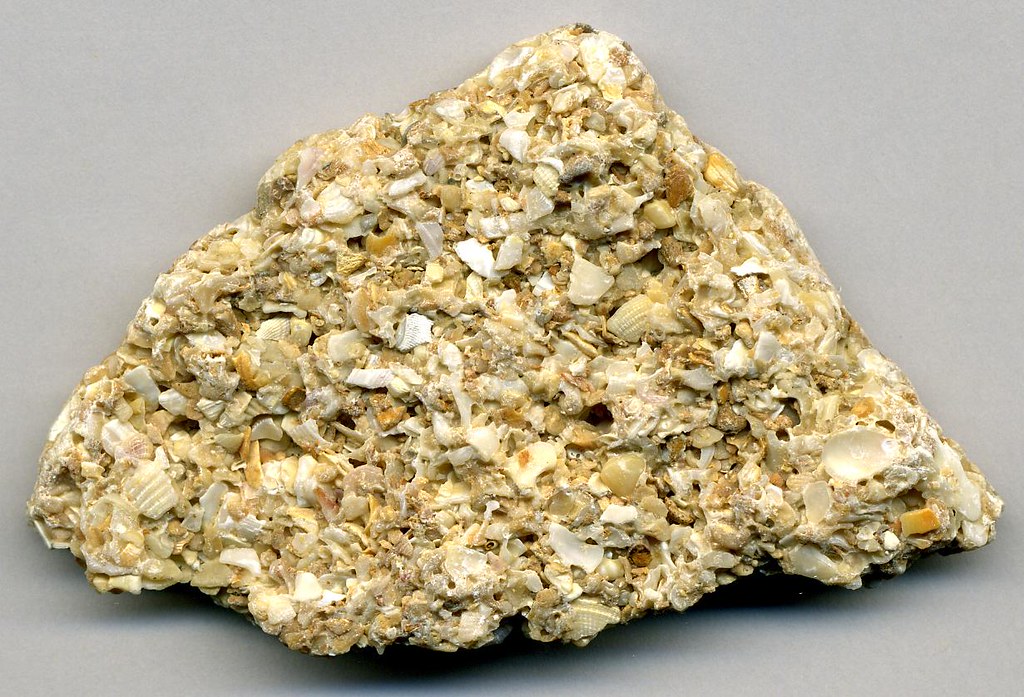Limestone
Limestone is a sedimentary rock composed of the carbonate minerals calcite and aragonite. Limestone can form through deposition or precipitation and there are different names for these rock types dependent on the formation / composition of the rocks. Limestone is not found everywhere and it only occurs in areas where underlain sedimentary rock exists.
Limestone Rock Types -
Chalk: fine grained; white or light gray in color. It is formed by the calcium rich shell remains of microscopic marine organisms or certain types of marine algae.
Coquina: calastic; tan or white in
color. It is formed mainly by the broken shell remains of marine organisms.
Fossiliferous Limestone: calastic; grey in color. It is
formed by the remains of marine organisms: shell and skeletal fossils.
Lithographic Limestone: very fine grained; white or
light gray in color.
Oolitic Limestone: fine grained; white, gray, or
yellow in color. It is formed by small spheres of calcium carbonate particles
“oolites” through precipitation.
Travertine: banded; white in color. It is
formed by evaporative precipitation, often in a cave and produces formations
such as stalactites, stalagmites and flowstone.
Tufa: porous; white or gray in
color. It is formed by precipitation of calcium rich waters such as a hot
spring, lakeshore or marine environment.
Uses For Limestone -
construction
architecture
food additive for animals
(calcium source)
cosmetics/toothpaste
ingredient in paper, plastic,
paint
remineralization
Resources:

No comments:
Post a Comment